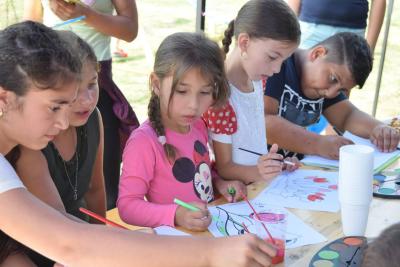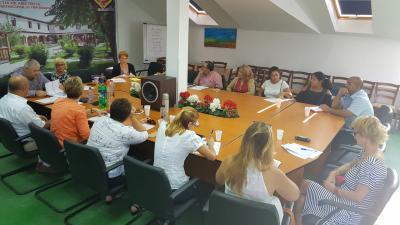
The Local Action Plan for Timisoara “Increasing social inclusion in Kuncz neighbourhood through interventions aimed at physical, economic and social regeneration of this area” targets one of the most deprived areas of the city: the Kuncz neighbourhood.
Five actions were proposed to tackle the poverty and social inclusion in the area:
- Development and implementation of a methodology for collecting data regarding the poverty level in the target area, deploying two researchers on the ground and writing one study report.
- Building and fitting a multifunctional community centre (including one day care centre for children and one community integrated social service for adults);
- Designing interventions in order to increase children’s participation in education
- Designing interventions in order to increase young people and adults participation in the job market
- Setting up a green area (1000 square meters), a sport and open air fitness terrain and modernization of one of the roads that forms the neighbourhood
The Urban Local Group includes 25 representatives from institutions active in the social, educational, law enforcement and religious fields, NGOs working in the social domain, the Local Initiative Group for Roma People and representatives from Kuncz neighbourhood.
Regarding the first action, two ULG members - the Social Assistance Department
For the action aiming to increase participation of children in education, the ULG members regarded the involvement of parents as one important aspect. One big event was organised in the neighbourhood and 300 participants joined in: 40 representatives from ULG and other local stakeholders, 190 children and 70 parents/inhabitants from Kuncz neighbourhood. Children and their parents learned about the importance of education and were involved in non-formal educative actions. The event was planned as a response to one of the project’s challenges: involving local stakeholders and organising decision-making for delivery.
When trying to increase participation in education, the ULG members faced implementation challenges like involving local stakeholders and fostering an integrated approach. They decided to establish a common methodology to tackle early school drop-out among children in the targeted area. In the next months the interested ULG members will meet on a monthly basis to work on the methodology and they will invite other interested parties (for example schools) to join this initiative. The methodology will be piloted in the Kuncz area and, if successful, extended to other deprived areas from the city.
Activities were deployed in order to increase participation of young and adults from the targeted area in the job market. ULG members, together with the neighbourhood representatives organised an action in Kuncz aiming to meet the inhabitants and talk about work with them. Twenty inhabitants decided to join in and discuss about the meeting’s theme, the challenges they face when trying to find a job, but also the advantages in having a steady income. Among the participants, there were young people looking for a job (starting from 16 years old), adults who receive unemployment benefits, single mothers with children in care, people engaged in not-regular jobs, but also people who already have a job.
Facing the challenge of involving local stakeholders, especially the ones in the economic domain, the ULG members decided it was important to organise an event these stakeholders will be interested in. Given the economic context of Timisoara, with very low unemployment rates, ULG organised a Job Fair for Roma Minority and promoted the event among local entrepreneurs. 10 employers from the community participated at the Job Fair offering 313 jobs. ULG members prepared both the Kuncz inhabitants and the employers for this event: the employers found out that most of the inhabitants are low skilled and the inhabitants were supported in preparing themselves for the interviews and in preparing their CVs. 89 Roma people obtained a job thanks to this job fair.
As for the actions regarding the public infrastructure, meetings among different Municipality departments were held in order to identify financial sources and to prepare needed documents for projects.
During their meeting in August, the ULG members discussed about i
For the next months the ULG is going to work on finding solutions to overcome the identified barriers and obstacles. It will also work on the actions from the Local Action Plan and it will continue to pay special attention on citizens’ involvement.
